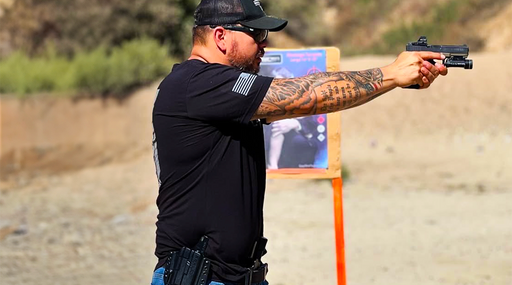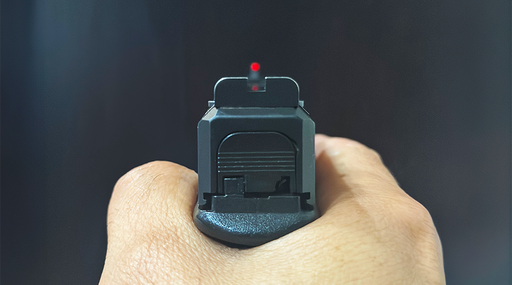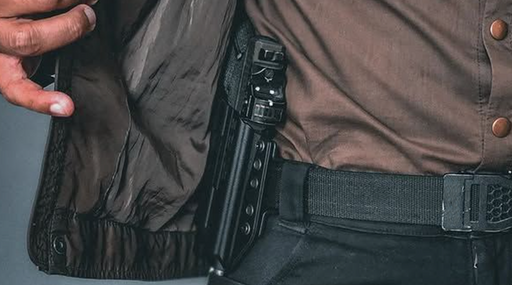Carrying a concealed handgun, and being competent in its use, is a powerful step in being ready for unwanted and unavoidable encounters. Gun carriers are increasingly becoming aware that the life-saving qualities of a firearm should be paired with the ability to stop life-threatening blood loss.

^Gun? Check. Blade? Check. Med kit? Check.
It may not only be the violent criminal actor who’s shot or stabbed. It could be you or someone you care for. Most gunshot wounds and blade wounds, at least to extremities, are survivable if severe bleeding can be stopped. In addition to the unlikely event you’re involved in a shooting, daily activities like driving and mowing the lawn bear even more risk, statistically speaking. Are you ready?
This isn’t an article that expounds on tourniquet how-to’s. But it’s no understatement to say that, with emergency medical training and resources currently almost as available as concealed carry classes, it’s irresponsible to not have basic skills and tools to stop arterial bleeding. Yes, EMS personnel are on call and, in most locations, are able to arrive in minutes. But a couple minutes is all you may have to save a life before their arrival.
^It made me a little too happy to learn my tourniquet skills work—on myself. The pain would come later.
Let’s talk about finding the right training, and setting up your emergency medical kit in a way that’s not burdensome. Just like carrying concealed requires the right gun and gun holster, emergency medical equipment must fit the same requirements. As with training on your EDC gun, occasional practice with your choice of medical gear makes a successful outcome more likely.
Lessons about life-threatening and the relative ease with which laypeople can contribute to better outcomes were learned at a very high price by our armed forces. As both a gesture of respect for their sacrifices, as well as a way to fulfill my own commitment to be hard to kill, I have learned these skills and stay prepared—with both mindset and equipment—to use them. That’s a noble way of saying I’m not ready to leave this earth yet, nor do I want some other person to leave before their time due to my own incompetence or unwillingness to help.
Training that is derived from the TCCC, or Tactical Combat Casualty Care model, is the sort referenced here. Numerous law enforcement and a handful of civilian versions of this curriculum are in circulation today. Your local law enforcement or EMS agency, or firearms training school, are ideal places to look for tactical medicine training.
While CPR, basic first aid, and the like are valuable skills also, tactical medicine covers the life-threatening wounds that are most likely to occur at gun ranges. Basic first aid Is good to know, but it should be a priority to have bleed-stopping skills at the ready.
TCCC covers not only tourniquet use, but also injuries to the torso, such as penetrating chest wounds, many of which don’t have to be fatal if proper techniques are applied. Although some aspects of TCCC are beyond the average layperson’s capabilities, the basics of tourniquet application and proper choice and application of dressing to torso wounds is within the reach of any willing person, including teachable, motivated pre-teens. Casualty evacuation, another skill under the TCCC umbrella, can apply to civilians caught in situations where moving the injured person to is wise. The armed forces have battlefields; we have public highways and remote areas that may necessitate moving the injured.
There’s a “boo-boo kit” in my range bag for minor cuts, blisters, and such. But my tourniquet, chest seal, compression bandages, and blood-coagulating dressing are worn in an accessible, discreet ankle wrap when I’m on the range or hiking or working in remote areas. The safe-retreat room and entryway of my house are supplied with duplicate kits. And on the back of my vehicle’s headrest is a fanny pack, set up for grab-and-go ease for both boo-boos and serious injuries. Although one wishes never to need such supplies, I’ve found myself grabbing the kit when encountering two separate car accidents in areas where EMS personnel can take more than 30 minutes to arrive. I also deployed the tourniquet in the headrest pack for myself one day following a bloody home repair mishap.
^My ankle kit, discreet and comfy.
The skill and gear to stop severe bleeding isn’t as sexy or exciting as carrying a gun, but it can be just as effective in saving a life. The time to learn is now.

Eve Flanigan is a defensive shooting and concealed carry instructor living in the American Southwest. She is a lifelong student of the gun and self defense. Today she works full time as a rifle/pistol instructor and writer in the gun industry. Life experiences inspired Flanigan to coalesce formerly separate interests in fitness, marksmanship and self-defense into a way of life.























Leave a comment